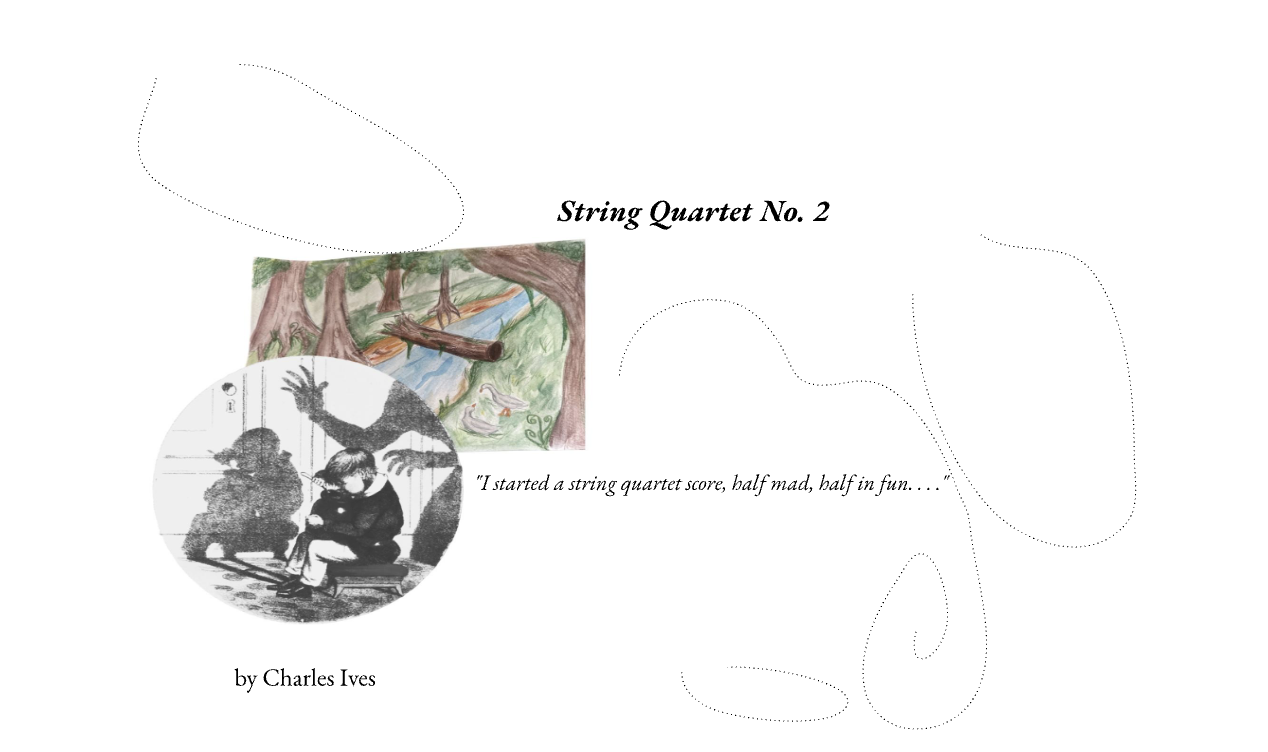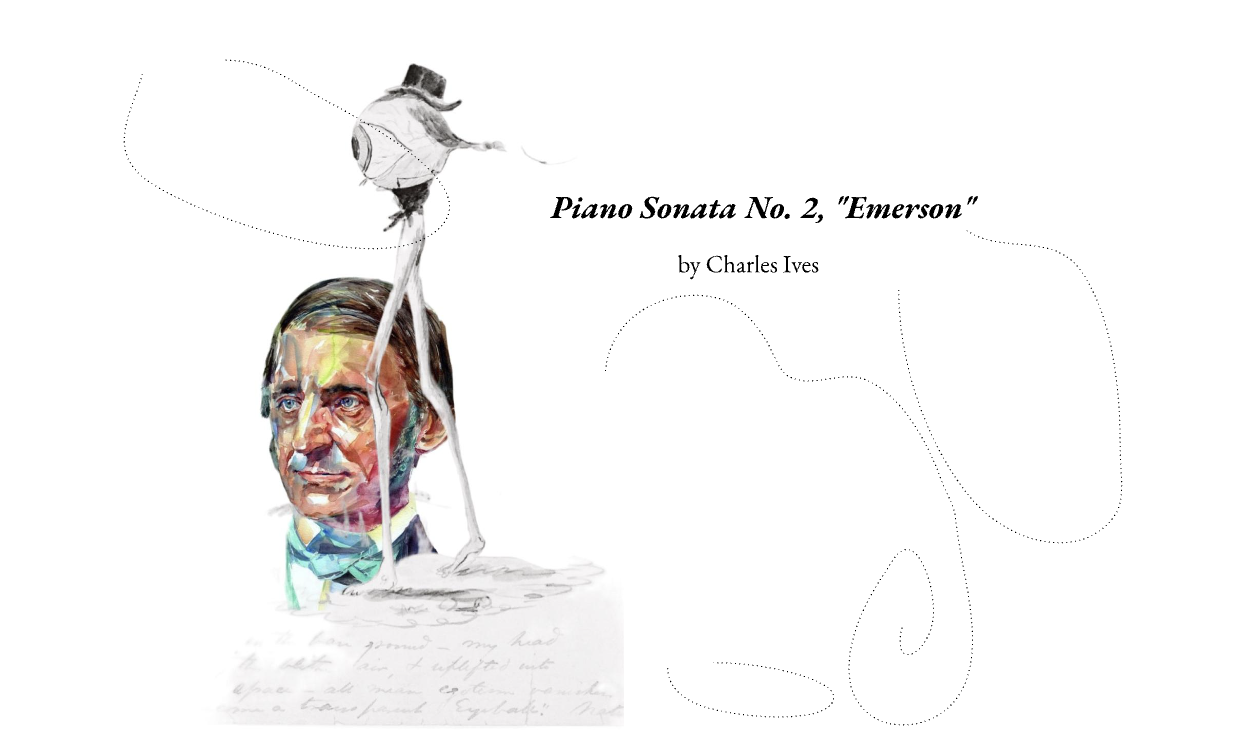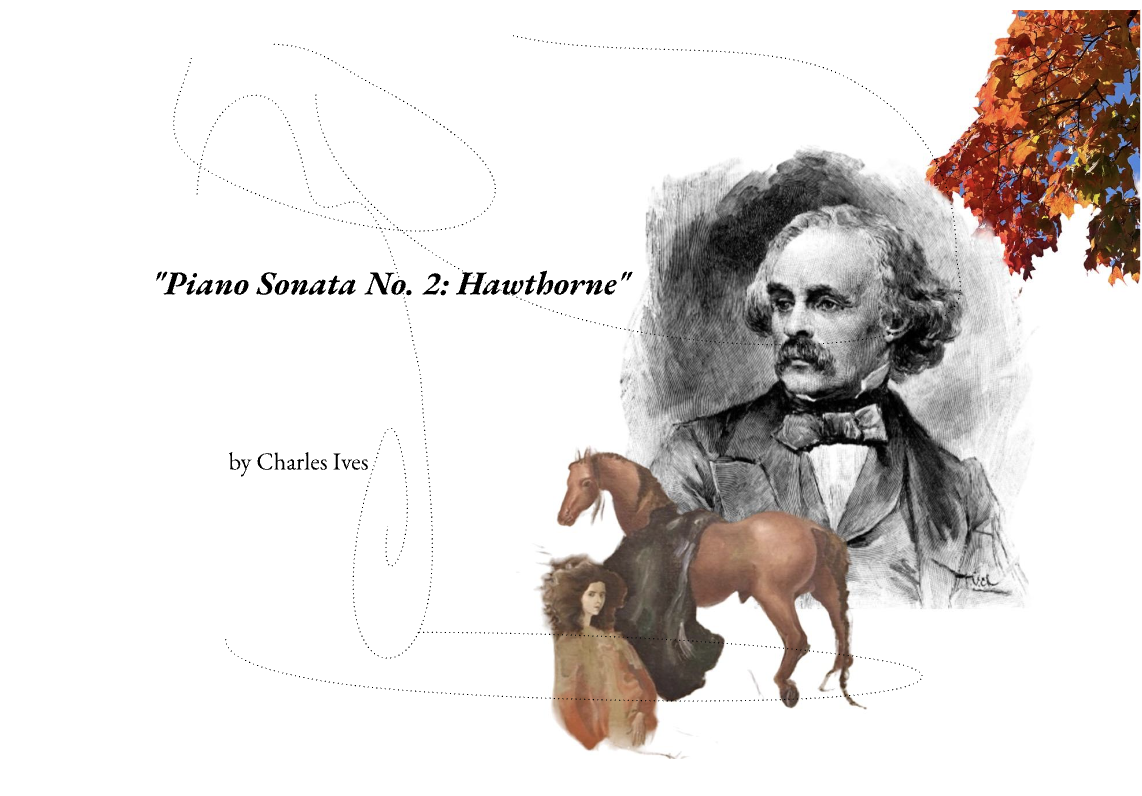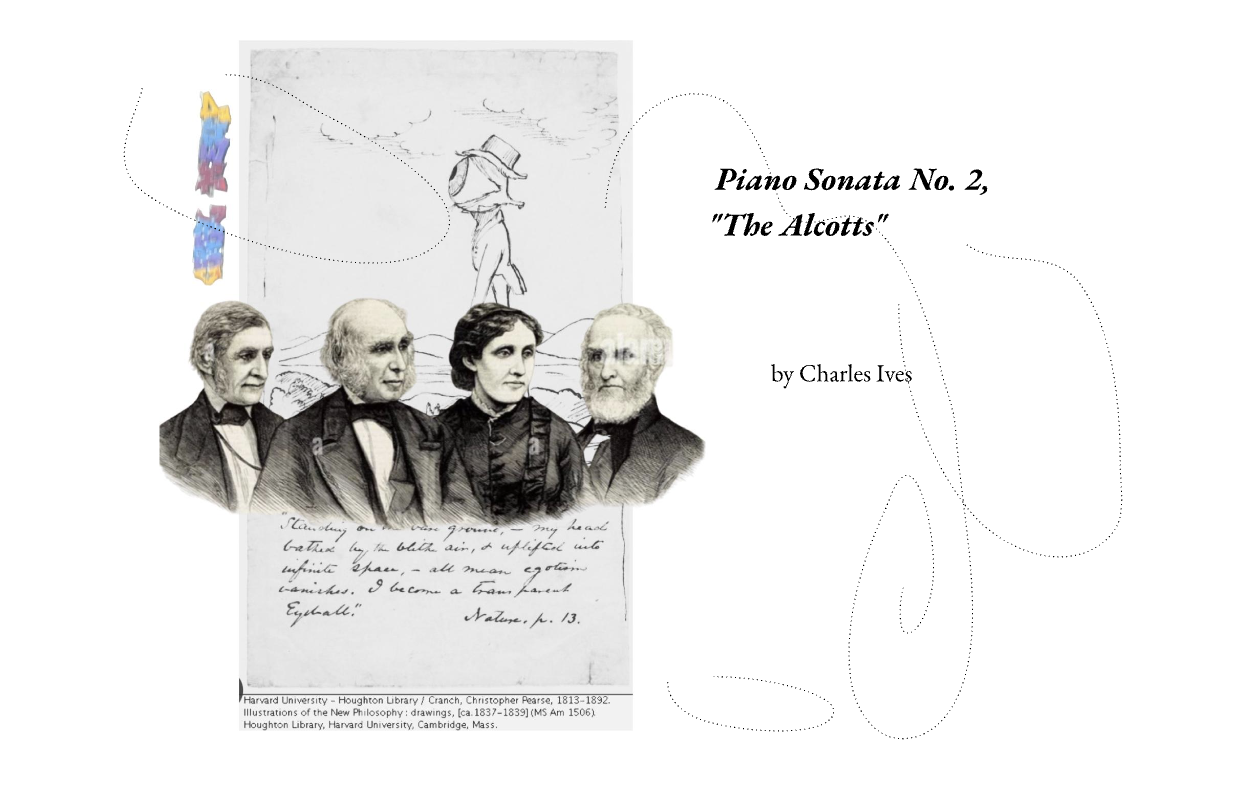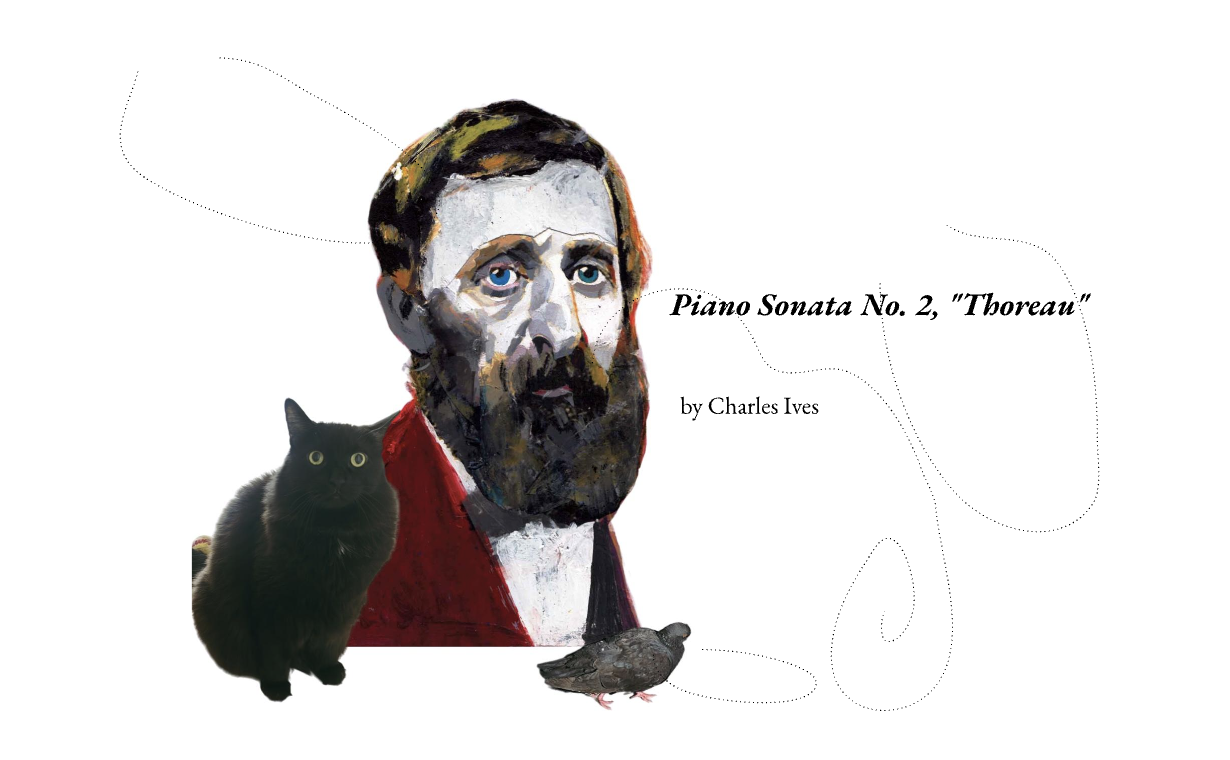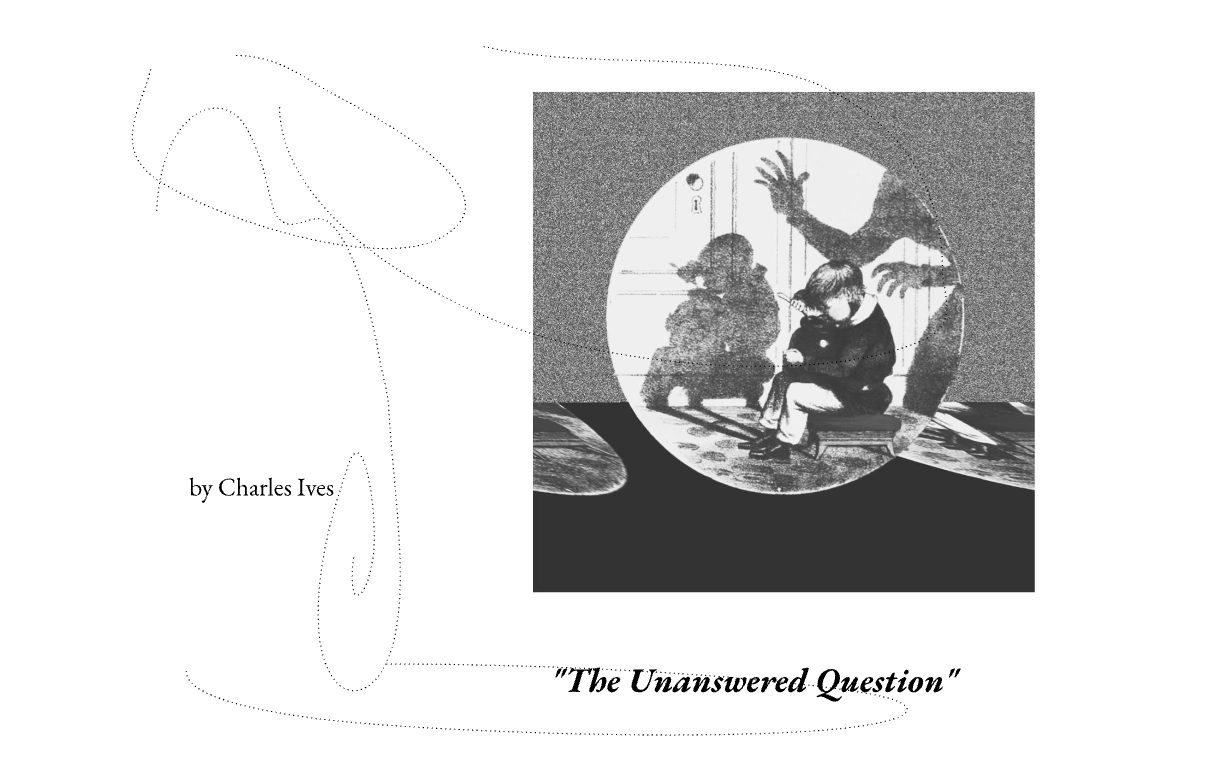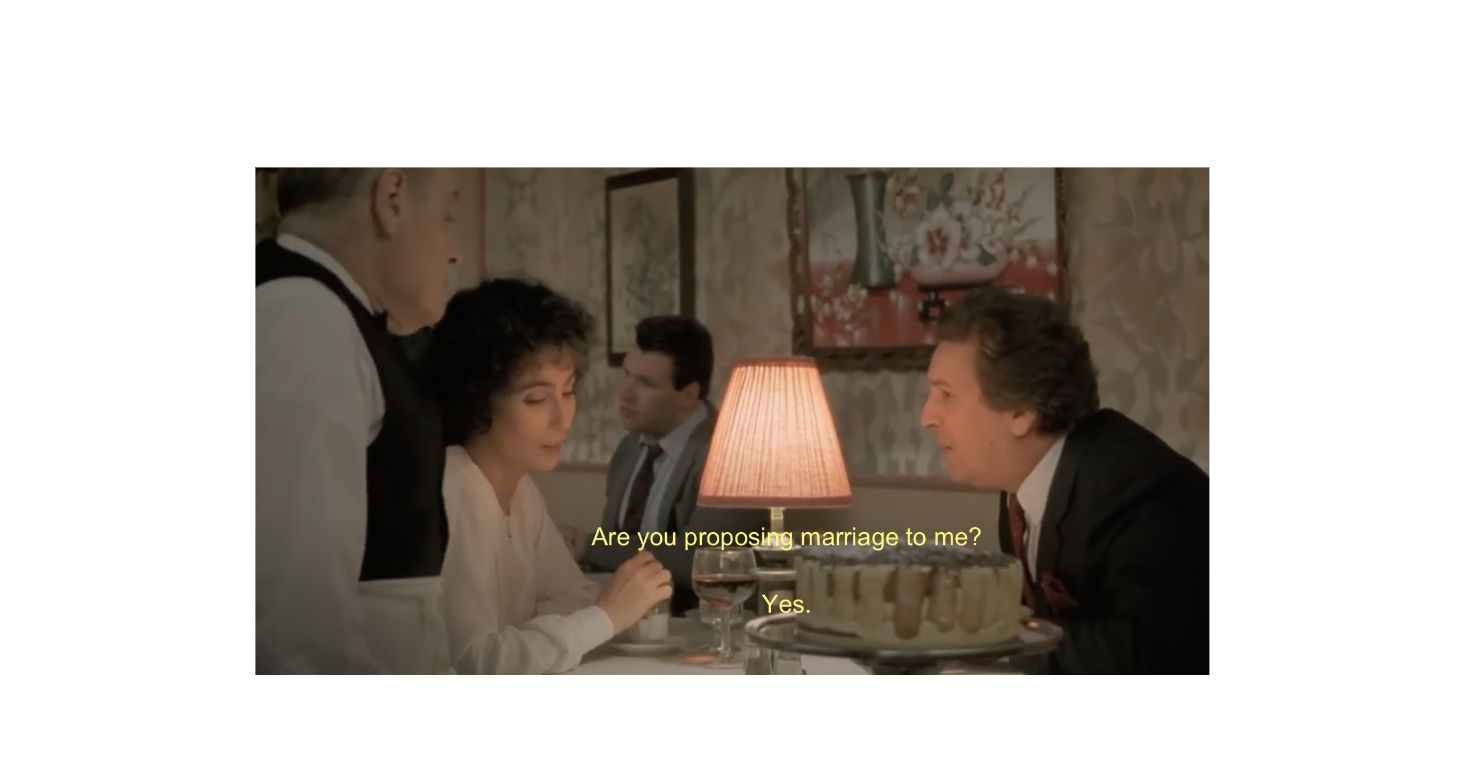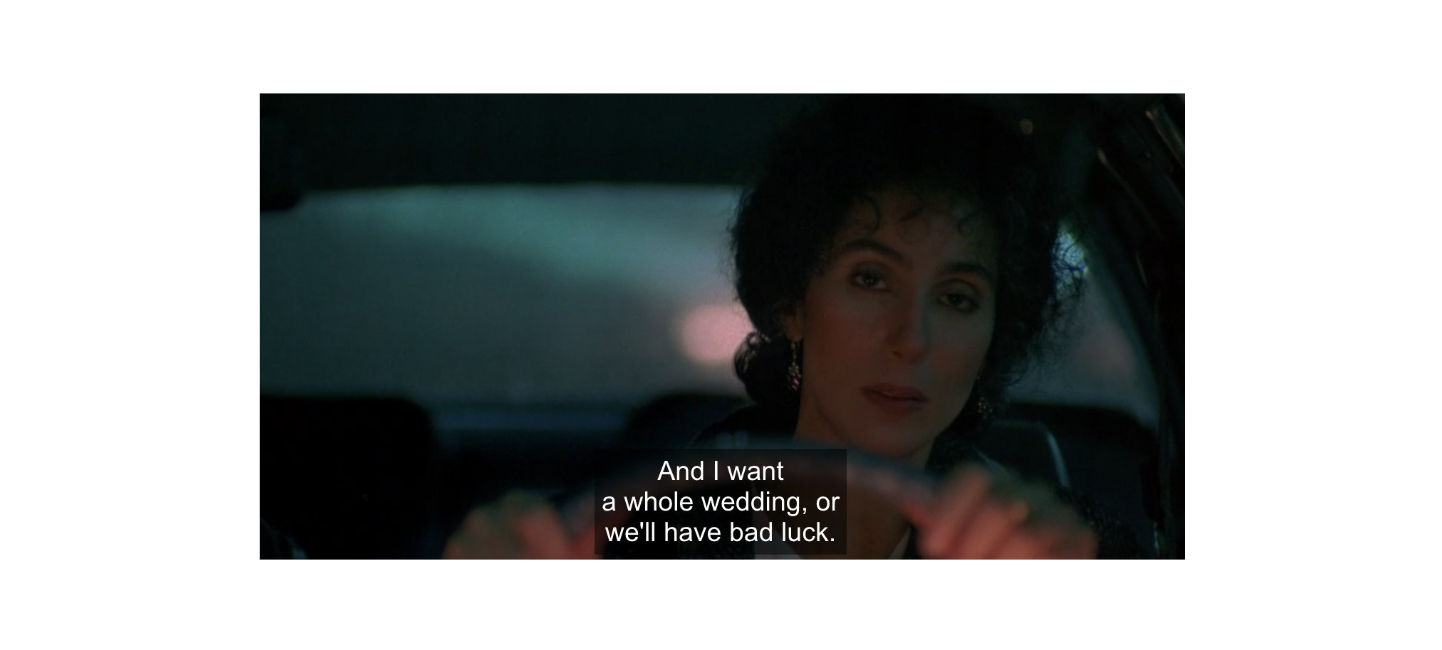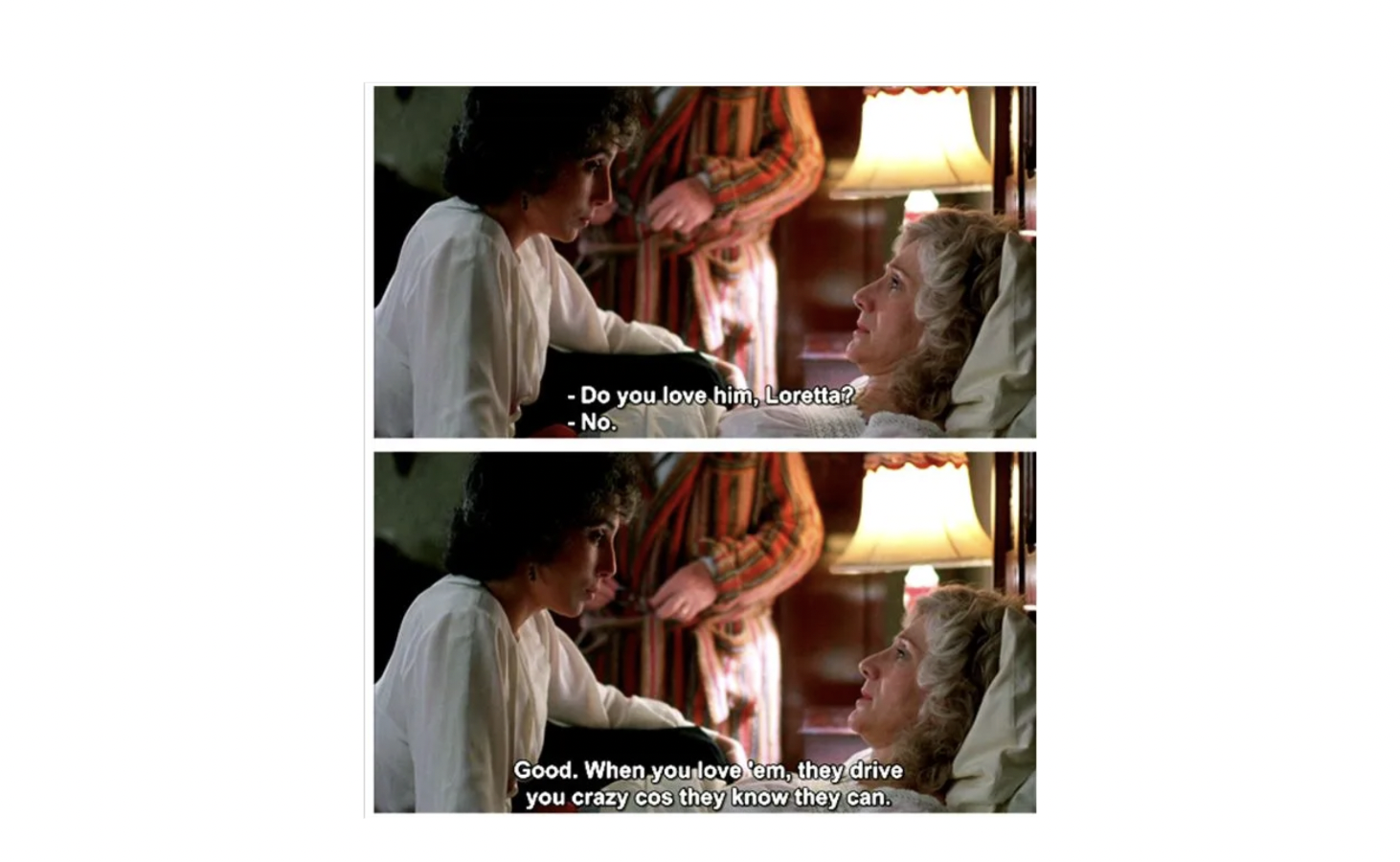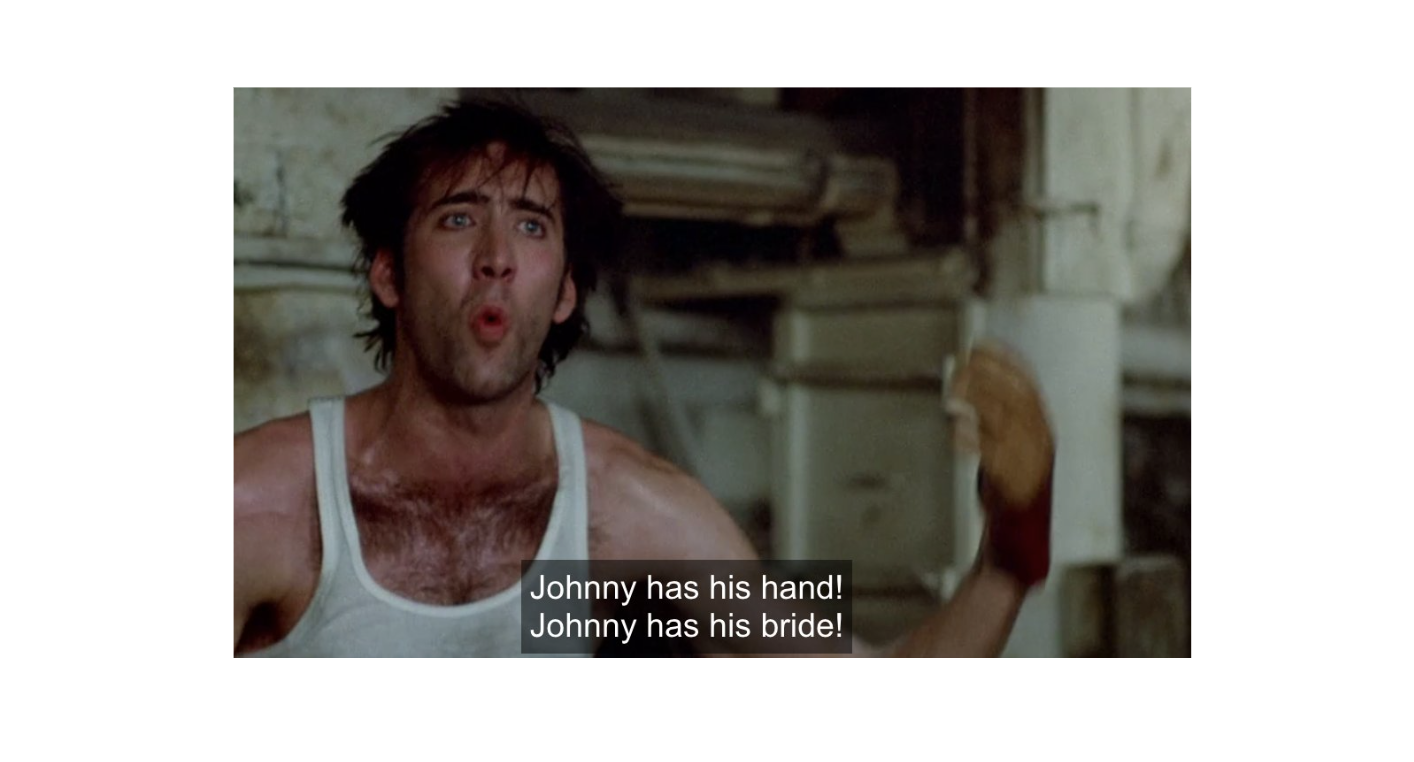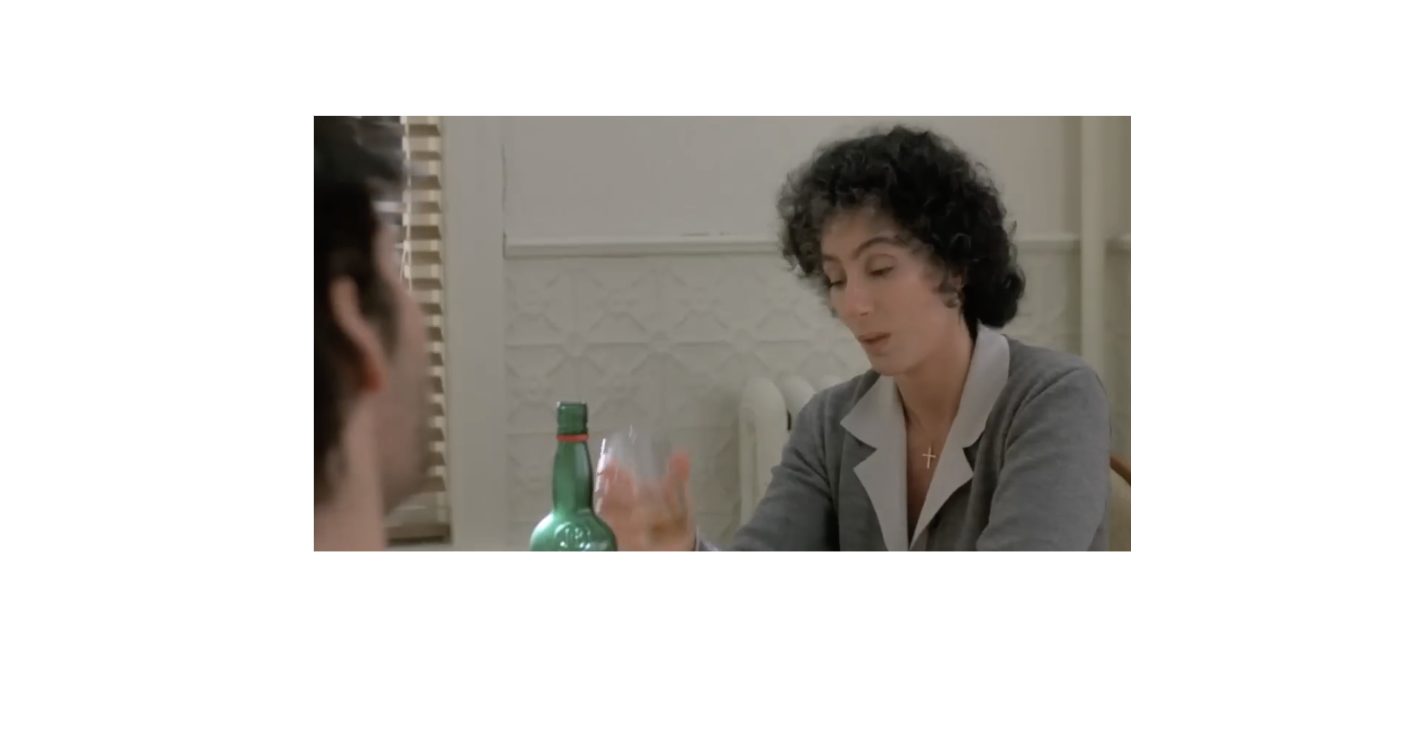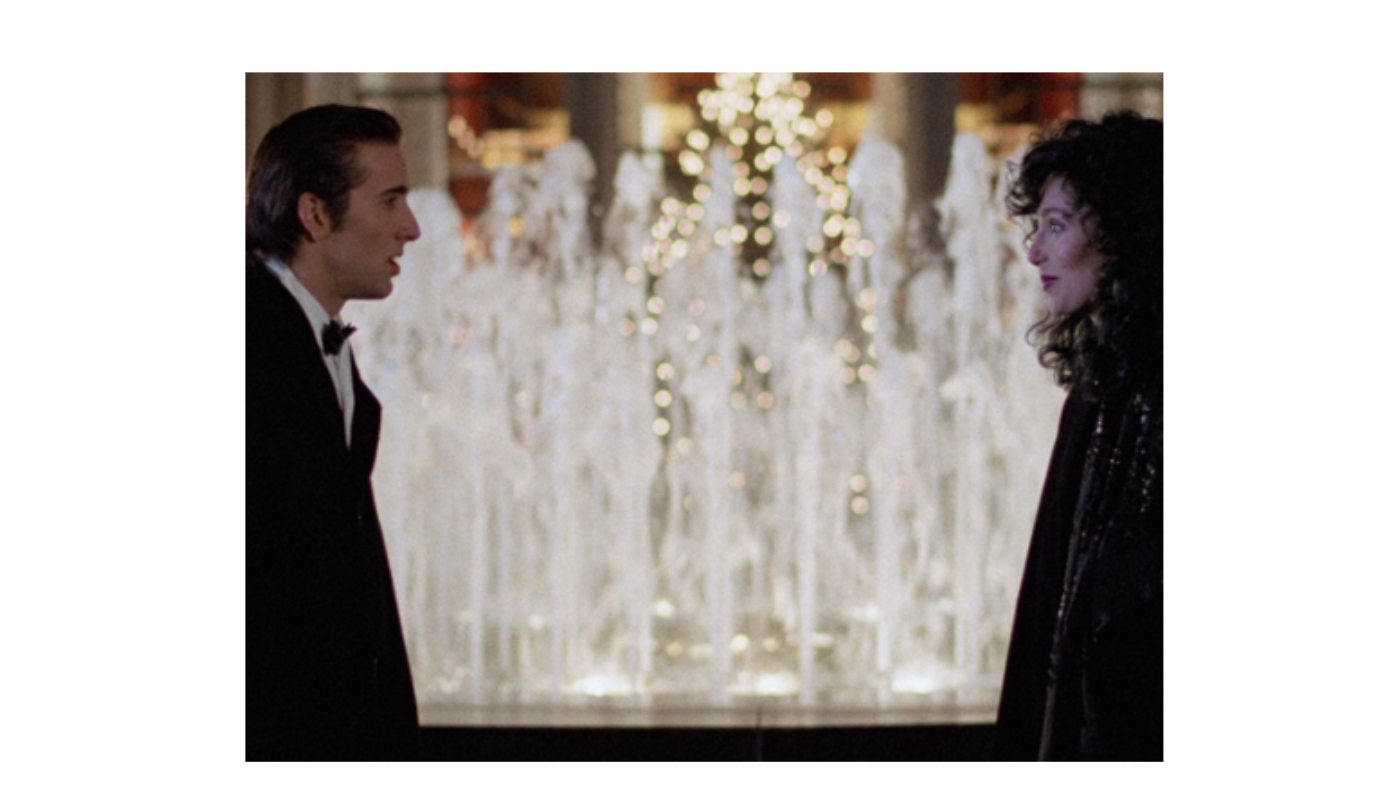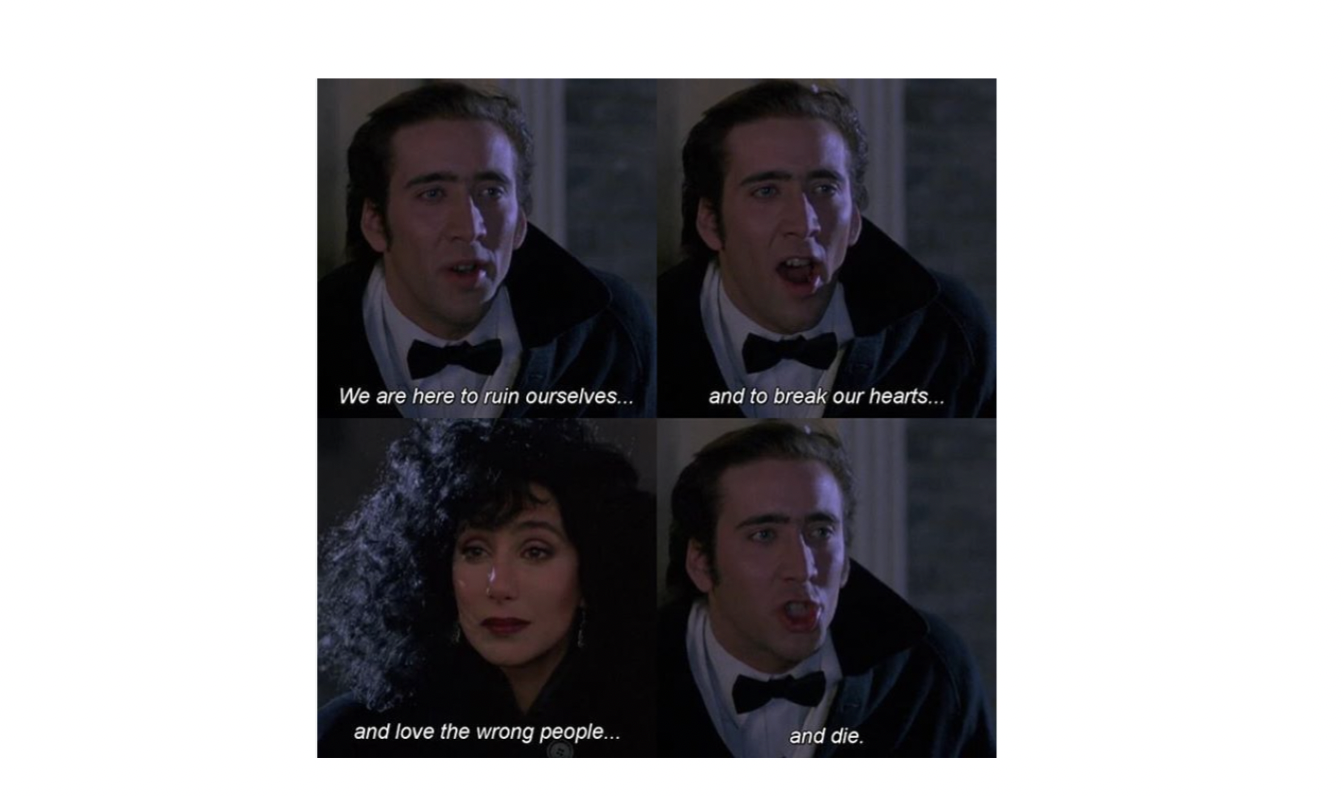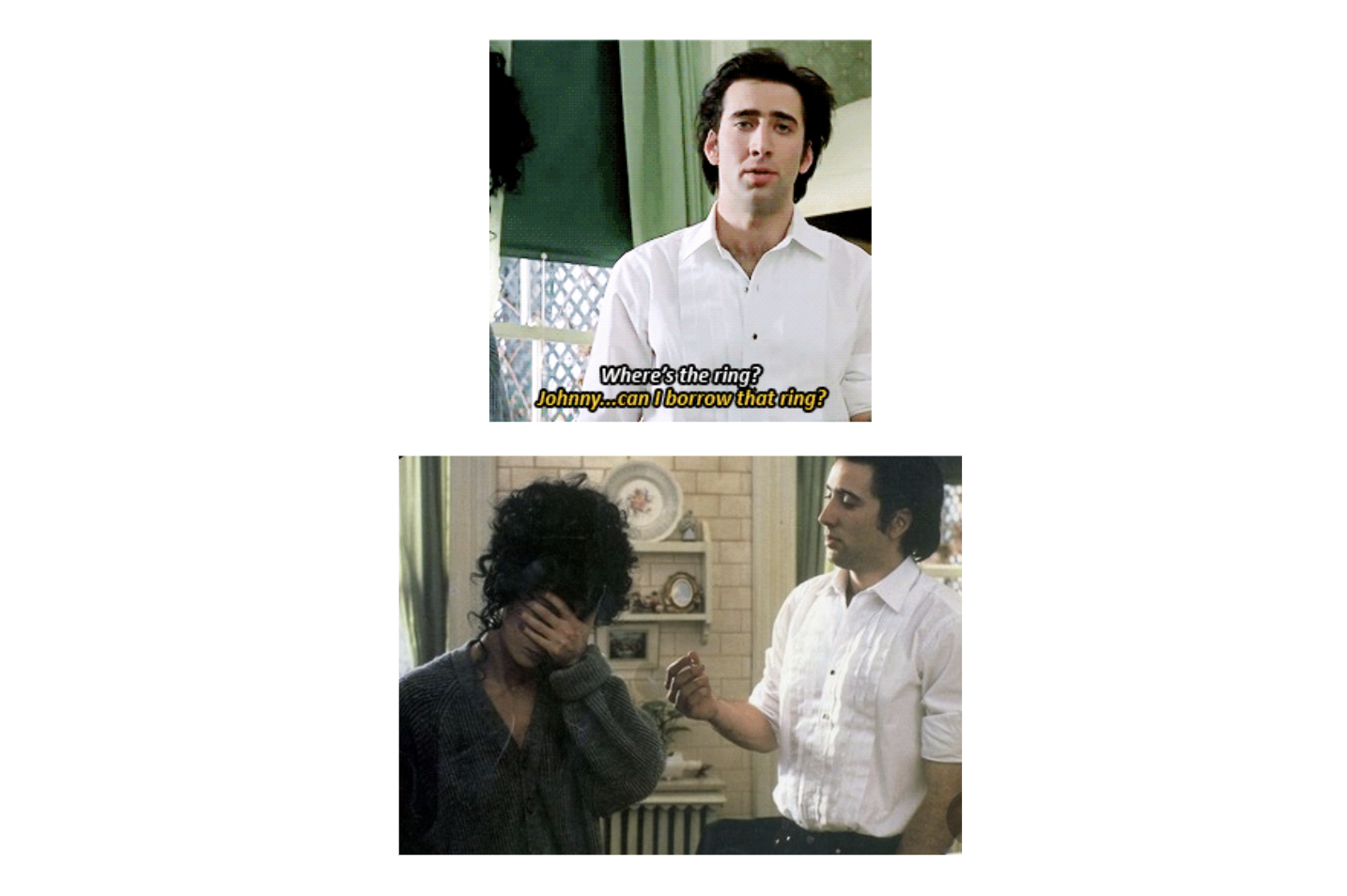1. Cosmology
On October 20th, 1874, Charles Edward Ives entered the world via Danbury, Connecticut. He remained in this world for 79 years, during which he joined Wallace Stevens by turning the insurance salesman an alternate career for the American artist.
2. First memory
Among his first memories, Charles recollected his father, George Ives, standing in the rain outside their house, listening to church bells peal ring through the heavy air, his brow furrowed in concentration as he rushed back inside the house to duplicate the overtone structure on his piano. Again and again, his father went out to listen and came in to try to play what he had heard.
As a military band leader and lover of muses, George snatched melodies from the air and carried them home for experimentation and elucidation. These memories inspired Ives’ compositional practice. Drawing on the soundscapes of his Danbury childhood, Ives frequently snuck popular forms like ragtime, religious hymns, circus parades, folk songs, military marches, and patriotic anthems into his pieces.
3. Two variations on a river scene
In June 1908, the newly-married Charles Ives and Harmony Twichell, went for a hike while vacationing in the Berkshire Hills of New England. Two days later, still meditating on the ethereal landscape, Ives began sketching what would become the final movement of his orchestral tryptic, Three Places in New England (1914). He titled this third movement The Housatonic at Stockbridge, and it stretches from a luminous silence towards voices that shift in and out without announcing themselves, as if riding an eternal current.
Fragments of hymns like Isaac Woodbury’s "Dorrance" waft through the piece, giving it the feel of a sonic collage presaging John Cage’s The Idea of North.
Ives credited that “Sunday morning walk that Mrs. Ives and I took near Stockbridge, [Mass.,] the summer after we were married. We walked in the meadows along the river, and heard the distant singing from the church across the river. The mist had not entirely left the river bed, and the colors, the running water, the banks and elm trees were something that one would always remember.” After describing the scene, Ives added that “Robert Underwood Johnson, in his poem, ‘The Housatonic at Stockbridge,’ paints this scene beautifully.” In actuality, Johnson’s poem was titled “Ode to the Housatonic at Stockbridge,” and Ives returned to it in 1921, when he arranged this movement as a song for voice and piano with Johnson's text. Ives had an excerpt of the poem printed in the score of the original orchestral version. Here’s Housatonic at Stockbridge (1921) with Gilbert Kalish, piano and Jan DeGaetani, mezzo-soprano.
4. “The wrong way”
“Ives blasts in my head, and I can hear Ed’s voice chastising me about my lack of understanding of this great American music,” wrote the great Charles Bowden in what ended up being one of his final published essays, a piece that meets the desert and borders in Edward Abbey’s love for Ives’ compositions.
In a review of Jeremy Denk’s new Ives for NPR, Tom Huizenga says Ives “inherited” his zaniest ideas from his father, that “musical jack-of-all-trades … who instructed his son to sing songs in one key and play the accompaniment in another.” George Ives used to tell his son, “If you know how to write a fugue the right way, then I’m willing to have you try the wrong way.”
5. Motherwell’s monster
Motherwell dedicated the painting to Ives because he felt the composer understood the difficulty of making modern art that moves its audience without explaining why.
— Smithsonian
In 1959, Robert Motherwell painted Monster (for Charles Ives) while listening to Ives’ music. Drawn to the unexpected chords and musical phrasings, Motherwell opened himself to images and impressions inspired by the drifts towards atonality. According to the Smithsonian (where this work is currently held but not exhibited), the monstrous, threatening masses that punctuate Motherwell’s paintings “express his anxieties as an artist and as a witness to a violent century.” A few years earlier, Motherwell said that poets, composers, and artists were "ill at ease in the universe" and their creations intended to parse the ravine between loneliness and the living world.
Robert Motherwell, Monster (for Charles Ives), 1959,
6. String Quartet No. 2
The string quartet right from the beginning was always a... subtle medium for the expression of social relationships... The old image of... four civilized people talking to each other in terms that would not have been unfamiliar to philosophers of the Enlightenment. And whilst that of course is somewhat absurd from the present-day standpoint, and indeed was turned on its head by Charles Ives who had four very irascible characters climbing a mountain and shrieking at each other... It does seem to me there is something about the quartet which is inherently imbricated with what we understand human relationships to be on a highly evolved level.
— Brian Ferneyhough in documentation accompanying a recording of rehearsal of his own Sixth Quartet
It used to come over me — especially after coming from some of those nice Kneisel Quartet concerts—-that music had been, and still was, too much an emasculated art. Too much of what was easy and usual to play and to hear what was called beautiful, etc. — the same old even-vibration, Sybaritic apron-strings, keeping music too much tied to the old ladies. The string quartet music got more and more trite, weak, and effeminate. After one of those Kneisel Quartet concerts in the old Mendelssohn Hall, I started a string quartet score, half mad, half in fun, and half to try out, practice, and have some fun making those men fiddlers get up and do something like men.
—- Charles Ives of String Quartet No. 2 (in Memos)
"S[tring] Q[uartet] for 4 men—-who converse, discuss, argue (in re: 'Politick', fight, shake hands, shut up--then walk up the mountain side to view the firmament!"
—-Charles Ives, beneath the score's title
Supposedly, Ives started composing this string quartet as a 21-year-old student. The first movement, "Discussions," introduces the two violins, viola, and violoncello in a discursive motion. The second movement, "Arguments," emerged from a 1907 sketch inspired by lively conversations and debates at "Poverty Flat," the apartment Ives shared with friends. The score includes quotations of Tchaikovsky, Brahms, and Beethoven's "Ode to Joy" theme. In these quotations of Romantics, Ives pushed back against the musical establishment who rejected him.
Ives scores the second violin as a character named "Rollo." With [Andante emasculata / Slowly in an emasculated way], the second violin, Rollo, steps in with these maudlin tonal candenzas that attempt to establish order among the arguing voices of the quartet by evoking traditional sentimentality. Then, after a few measures, we get [Allegro con fisto / Cheerfully with fist ] where other instruments respond with a dissonant fff passage recalling the opening of the movement. This is followed by another slow, emasculated cadenza.
Notation: "Too hard to play, so it just can't be good music - Rollo."
The second movement shifts into the third movement with a brief, open-string pause designated by [Andante con scratchy (as tuning up) / Slowly like scratchy]
Allegro con fistiswatto / fff "good place to stop - not end!"
The dissonant chords that open the third movement, "The Call of the Mountains,” don’t move at first. Although the music unfolds slowly, it soon gains momentum as a the furious tremolos intervene. Gradually, the instruments strain to the upper limits of their registers as the four ascend the mountain.
I love how this quartet ends without giving the audience anything except a queer presentiment of metaphysical mystery. It is unsettling and inexplicable, and keyed to Ives’ own disgust for the perfect composure of music society led him to rant against the string quartet’s formal colloquy of bourgeois patronage—- "a whole evening of mellifluous sounds, perfect cadences, perfect ladies, perfect programs, and not a dissonant cuss word to stop the anemia and beauty."
Through the character of Rollo, Ives lambasted the mainstream critics and musical media. In this, his Rollo reminds me a bit of a persona invented by composer Claude Debussy when he found himself in dire need of money and began writing musical critique under the pen name “Monsieur Croche” (i.e. Mr. Quarter-note). After his death, Debussy’s criticism was collected and published as Monsieur Croche, Antidilettante.
I’ve written a whole series of poems based on Ives’ string quartet, but two have been published, thus must I mortify the reader by sharing them.
First published in Air/light, a journal I adore.
First published in Air/light, a journal I adore, edited by David Ulin whom I deeply admire.
7. Inventory in which each statement begins with Ives:
“Was a spikey and outspoken man” who “hated what he called 'pretty music'.”
Was obsessed with Columbia, the Gem of the Ocean, sneaking it into his compositions again and again, much as Mahler did with those ghostly parade-trumpet calls.
Composed his most well-known works from 1896 to 1921 and had pieces performed as early as 1925.
Composed Study No. 21: Some Southpaw Pitching (1918–19) for piano in an effort to put baseball to music.
Was not “widely known” until 1939, despite his prodigous output.
Wrote four symphonies, the third of which—Symphony No. 3—won the 1947 Pulitzer Prize.
Left us with unconventional notation, often omitting key, time signatures, and bar lines.
Charles Ives in his tweed.
8. Of free dissonance
In 1919 or 1920, Charles first heard Igor Stravinsky's The Firebird, and found it lacking. "The idea of a phrase, usually a small one, was good enough, and interesting in itself, but he kept it going over and over and it got tiresome," Ives said of Stravinsky. "It reminded me of something I had heard of Ravel, whose music is of a kind I cannot stand: weak, morbid and monotonous; pleasing enough, if you want to be pleased."
“He experimented with atonality way before Schoenberg—-and with free dissonance way before Stravinsky—- and with quarter-tones way before Alois Haba—- and with multiple rhythms, even today so complicated they can hardly be performed accurately,” conductor Leonard Bernstein said of Ives. Despite being an insurance salesman, Ives stood apart from other pioneering composers in that his “whole real life was composing music.”
9. Of foot-notes
Like Ralph Waldo Emerson, Ives scorned footnotes. The 1920 publication of his Essays Before A Sonata includes a total of five in a work built on quotations. However, the book begins with the first and only “Introductory Footnote” I have ever read, authored by Ives himself, informing us, his readers, that:
These prefatory essays were written by the composer for those who can't stand his music—and the music for those who can't stand his essays; to those who can't stand either, the whole is respectfully dedicated.
10. Of property and various local characters buried in Ives’ work
Sam Staples was a Concord "character" who rose from hustler and barkeeper to constable, and later Representative in the General Court. He was Thoreau's jailer in 1846 when Thoreau refused to pay his poll-tax in protest against the war with Mexico, and later, his friend and rodsman on surveying expeditions.
While meditating on the "perversion" occasioned by property, Ives thought of Sam Staples in an essay on Thoreau:
It is conceivable that Thoreau, to the consternation of the richest members of the Bolshevik and Bourgeois, would propose a policy of liberation, a policy of a limited personal property right" on the ground that congestion of personal property tends to limit the progress of the soul (as well as the progress of the stomach) — letting the economic noise thereupon take care of itself — for dissonances are becoming beautiful — and do not the same waters that roar in a storm take care of the eventual calm? This limit of property would be determined not by the voice of the majority but by the brain of the majority under a government limited to no national boundaries. "The government of the world I live in is not framed in after-dinner conversation" around a table in a capital city, for there is no capital— a government of principles not parties; of a few fundamental truths and not of many political expediencies — a government conducted by virtuous leaders, for it will be led by all, for all are virtuous, as then their "innate virtue" will no more be perverted by unnatural institutions. This will not be a millennium but a practical and possible application of uncommon common sense. For is it not sense, common or otherwise, for Nature (to want) to hand back the earth to those to whom it belongs— that is, to those who have to live on it?
You can also get a sense of Ives’ non-existent citation strategy here, as he moves between quoting Thoreau to invoking others while ultimately landing on his lifetime credo, namely, “dissonances are becoming beautiful.”
11. Piano Sonata No.2, Concord, Mass., 1840–60
How far is anyone justified, be he an authority or a layman, in expressing or trying to express in terms of music (in sounds, if you like) the value of anything, material, moral, intellectual, or spiritual, which is usually expressed in terms other than music?
— Charles Ives’ opening salvo in Essays Before a Sonata
The Piano Sonata No.2, Concord, Mass., 1840–60 (commonly known as the Concord Sonata) is one of Ives’ best-known pieces. Although some parts of it were sketched in 1904, Ives didn’t really start working on it until 1911, finally completing the work in 1915. The Concord Sonata was first published in 1919 with a second, revised, edition appearing in 1947 (the one that gets used today).
Just before the original Concord Sonata was published, Ives published a book titled Essays Before a Sonata detailing the scope and reverie of his work. The Sonata was an "impression of the spirit of transcendentalism that is associated in the minds of many with Concord, Massachusetts of over a half century ago,” wrote Ives, and the conveyance of this transcendentalist spirit “is undertaken in impressionistic pictures of Emerson and Thoreau, a sketch of the Alcotts, and a scherzo supposed to reflect a lighter quality which is often found in the fantastic side of Hawthorne."
In 2012, a reprint of the original, uncorrected 1920 edition was published, including Essays before a Sonata and with an added introductory essay by the New England Conservatory's Stephen Drury. It is a gold mine for lovers of Ives. More than anything, one can hear Ives’ fascination with the Concord Transcendentalists intimately inscribed in the score. Each of the four movements represents a particular figure from local history.
0:00 - I. "Emerson" (after Ralph Waldo Emerson)
16:23 - II. "Hawthorne" (after Nathaniel Hawthorne)
29:21 - III. "The Alcotts" (after Bronson Alcott and Louisa May Alcott)
35:29 - IV. "Thoreau" (after Henry David Thoreau)
Ives’ experimental tendencies are on full display, as much Concard Sonata is written without bar lines, despite the advanced harmonic structure.
12. First movement: “Emerson”
“. . it [wisdom] enveloped us in dull, melancholy days, for in days of cheerful labor."
—- Ralph Waldo Emerson, final sentence of "Nature"
To Ives, both Emerson to Beethoven are “invaders of the unknown.” He claims this in Essays just before explaining that Beethoven’s Fifth Symphony rouses us with a transcendent call to action “above the relentlessness of fate knocking at the door, above the greater human-message of destiny, and strives to bring it towards the spiritual message of Emerson’s revelations, the Soul of humanity knocking at the door of the Divine mysteries.” This is why the first four notes of Beethoven’s Fifth are quoted in each of the Concord Sonata’s four movements, serving as quotational anchors that shape harmonies and assert sonic and gestural pivots within the melodic narrative.
Where Ives reads Emerson well is in his commitment to thinking towards truth rather than crowning himself as its inventor. Getting messy on the back roads of the mind requires imagination, and Ives agrees with Emerson’s view that imagination is critical to understanding. “To think hard and deeply and to say what is thought, regardless of consequences, may produce a first impression, either of great translucence, or of great muddiness, but in the latter there may be hidden possibilities,” Ives wrote, continuing:
Some accuse Brahms' orchestration of being muddy. This may be a good name for a first impression of it. But if it should seem less so, he might not be saying what he thought. The mud may be a form of sincerity which demands that the heart be translated, rather than handed around through the pit. A clearer scoring might have lowered the thought.
This line—-a clearer scoring might have lowered the thought— applies to Ives’ compositions— while the reference to mud as a form of sincerity calls to mind how little we know of each other. Both convention and the medium of language often overdetermine our reading of a speaker’s intent. Emerson lingers on this thought as well, lamenting what conversation presumes of sincerity. "How sincere and confidential we can be, saying all that lies in the mind, and yet go away feeling that all is yet unsaid, from the incapacity of the parties to know each other, although they use the same words!” Emerson exclaims. “My companion assumes to know my mood and habit of thought, and we go on from explanation to explanation until all is said which words can, and we leave matters just as they were at first, because of that vicious assumption." All the talk in the world won’t bring us closer to understanding one another if our goal is to merely listen rather than engage the labor of fathoming. For Emerson, no friendship could deliver a supernal knowing of the other: humans remained strangers in the land of the friend’s mind.
As an “impressionistic picture” of Emerson, the first movement has patches that feel as if the composer didn’t bother to make them cohere. This, too, seems intentional, since Ives writes in the Essays:
Carlyle told Emerson that some of his paragraphs didn't cohere. Emerson wrote by sentences or phrases, rather than by logical sequence. His underlying plan of work seems based on the large unity of a series of particular aspects of a subject, rather than on the continuity of its expression. As thoughts surge to his mind, he fills the heavens with them, crowds them in, if necessary, but seldom arranges them, along the ground first.
Striking an note that aligns with Emersonian perfectionism, Ives says of composers and writers who try the impossible and fail: “not being perfect, they are perfect examples pointing to that perfection which nothing yet has attained.”
Near the end of the “Emerson” movement, Ives included an optional part for viola—an unusual addition to a piano work. That choice opens the door to expanding the piece’s terrain; it locates a stake in sheer possibility.
13. Aside on Ives’ seeping sonata
Why did Ives leave his Concord Sonata for solo piano unfinished? And “what to do with those ad-lib cameo parts for, during the first movement, solo viola and, at the very end of the piece, solo flute?” wonders Philip Clark. “Should pianists wrap the suggestion of ‘alien’ instrumental voices back into the work’s fantasy? Or take Ives at his word and include them?”
The answer depends on the pianist. But the open-endedness of Ives’ interpretive space feels necessary, given his innovations in form. Like 19th-century novels, the sonata form usually assumes the creation of a musical world contained by the piece. Listening to a sonata allows one to enter and experience that world for the duration. The sonata’s aesthetic success may be judged on the basis of how effectively it transports the listener to the sonic world of its evocation. Alas, Charles Ives’ music specialized in seepage: it leapt over borders with a tin trumpet and introduced ordinary sounds defamiliarized by their insertion into the sonata. Ives was the maestro of wild allusion and quotation.
14. Second movement: “Hawthorne”
The substance of Hawthorne is so dripping wet with the supernatural, the phantasmal, the mystical—so surcharged with adventures, from the deeper picturesque to the illusive fantastic, one unconsciously finds oneself thinking of him as a poet of greater imaginative impulse than Emerson or Thoreau. He was not a greater poet possibly than they—but a greater artist.
— Charles Ives, Essays Before A Sonata
The pianist performing this “scherzo” is Alexei Lubimov. (Notice what happens at 9:08) For “there is often a pervading melancholy about Hawthorne, as Faguet says of de Musset "without posture, without noise but penetrating,’” Ives writes:
There is at times the mysticism and serenity of the ocean, which Jules Michelet sees in "its horizon rather than in its waters." There is a sensitiveness to supernatural sound waves. Hawthorne feels the mysteries and tries to paint them rather than explain them—and here, some may say that he is wiser in a more practical way and so more artistic than Emerson.
But none of this mystique, according to Ives, enters the 2nd movement. Instead, Ives claims that his “Hawthorne” is just an "extended fragment” aiming to impress the listener with some of Hawthorne’s “wilder, fantastical adventures into the half-childlike, half-fairylike phantasmal realms.” It is the fantastic Hawthorne that Ives fashions into music:
It may have something to do with the children's excitement on that "frosty Berkshire morning, and the frost imagery on the enchanted hall window" or something to do with "Feathertop," the "Scarecrow," and his "Looking Glass" and the little demons dancing around his pipe bowl; or something to do with the old hymn tune that haunts the church and sings only to those in the churchyard, to protect them from secular noises, as when the circus parade comes down Main Street; or something to do with the concert at the Stamford camp meeting; or something to do with the Concord he-nymph, or the "Seven Vagabonds," or "Circe's Palace," or something else in the wonderbook—not something that happens, but the way something happens; or something to do with the "Celestial Railroad," or "Phoebe's Garden," or something personal, which tries to be "national" suddenly at twilight, and universal suddenly at midnight; or something about the ghost of a man who never lived, or about something that never will happen, or something else that is not.
Notably, Ives added to “Hawthorne” a cluster chord created by depressing the piano's keys with a 14 3⁄4-inch (37 cm) piece of wood.
15. Third movement: “The Alcotts”
All around you, under the Concord sky, there still floats the influence of that human faith melody, transcendent and sentimental enough for the enthusiast or the cynic respectively, reflecting an innate hope—a common interest in common things and common men—a tune the Concord bards are ever playing, while they pound away at the immensities with a Beethovenlike sublimity, and with, may we say, a vehemence and perseverance—for that part of greatness is not so difficult to emulate.
— Charles Ives, Essays Before A Sonata
In Essays, Ives details the proximity of his characters in Concord, pausing at a space by occupied by the Alcotts to describe the partly-fictional “Orchard House,” which he calls “the home of the ‘Marches’", spaces “pervaded with the trials and happiness of the family and telling, in a simple way, the story of ‘the richness of not having.’” Ives continues:
Within the house, on every side, lie remembrances of what imagination can do for the better amusement of fortunate children who have to do for themselves-much-needed lessons in these days of automatic, ready-made, easy entertainment which deaden rather than stimulate the creative faculty. And there sits the little old spinet-piano Sophia Thoreau gave to the Alcott children, on which Beth played the old Scotch airs, and played at the Fifth Symphony.
The “musical sketch” won’t focus on the moral grandeur of the Alcotts. Instead, Ives renders “the memory of that home under the elms—the Scotch songs and the family hymns that were sung at the end of each day—though there may be an attempt to catch something of that common sentiment” demonstrated by the Alcotts, namely, “a strength of hope that never gives way to despair—a conviction in the power of the common soul which, when all is said and done, may be as typical as any theme of Concord and its transcendentalists.” No surprise that this movement begins with an instruction to be performed “moderately”.
16. Fourth movement: “Thoreau”
The personal trait that one who has affection for Thoreau may find worst is a combative streak, in which he too often takes refuge. "An obstinate elusiveness," almost a "contrary cussedness," as if he would say, which he didn't: "If a truth about something is not as I think it ought to be, I'll make it what I think, and it WILL be the truth—but if you agree with me, then I begin to think it may not be the truth."
— Charles Ives, Essays Before A Sonata
Briefly, during this fourth and final movement that Ives called an “impressionistic picture” of Thoreau, a flute appears as if to figurate the poet himself, drafting him into the tribute. To Ives, Thoreau was “a great musician, not because he played the flute but because he did not have to go to Boston to hear ‘the Symphony.’” Instead, Thoreau heard music in the forest.
“The rhythm of his prose, were there nothing else, would determine his value as a composer,” Ives wrote of Thoreau. One can hear this rhythm in “Sounds,” which takes off from a perfectly-shaped short statement that could be the first line of an ode: “I love a broad margin to my life.” Here is the delicious excerpt in its entirety:
I love a broad margin to my life. Sometimes, in a summer morning, having taken my accustomed bath, I sat in my sunny doorway from sunrise till noon, rapt in a reverie, amidst the pines and hickories and sumachs, in undisturbed solitude and stillness.... I grew in those seasons like corn in the night, and they were far better than any work of the hands would have been. They were not time subtracted from my life, but so much over and above my usual allowance. . . . For the most part, I minded not how the hours went. The day advanced as if to light some work of mine; it was morning, and lo, now it is evening, and nothing memorable is accomplished.
In addition to nature, Ives discovered time (and tempo) in Walden. "Throughout Walden, a text that he is always pounding out is Time,” Ives wrote, interspersing his own words with quotes from Thoreau’s:
“Time for inside work out-of-doors; preferably out-of-doors, though "you may perhaps have some pleasant, thrilling, glorious hours, even in a poor house." Wherever the place-time there must be. Time to show the unnecessariness of necessities which clog up time. Time to contemplate the value of man to the universe-and of the universe to man-man's excuse for being. Time from the demands of social conventions. Time from too much labor (for some) which means too much to eat, too much to wear, too much material, too much materialism (for others). Time from the "hurry and waste of life." Time in “St. Vitus Dance”.
And Time, of course, is prone to running out. "Who has heard a strain of music feared then lest he should speak extravagantly any more forever?" Thoreau wonders in the conclusion of Walden.
17. Essays Before A Sonata and Other Writings (Norton)
A deceased author cannot be queried, and one must either print his text exactly as he left it in the last approved version, or risk burdening the reader with the explanations and apparatuses of textual scholarship. The latter treatment would probably have annoyed Ives as it did Emerson, who speaks scornfully of the "Third state" (with the world and the soul) consisting of "the restorers of readings, the emmendators, [and] the bibliomaniacs of all degrees" scripts and the printed book.
An obviously necessary revision of the punctuation in the book could not be undertaken without looking up all the passages in quotation marks, of which there were hundreds. Even if it were decided that bolstering Ives' quotations with reference was unnecessary pedantry, there was no other way to distinguish between real quotations, paraphrases, allusions, or passages placed in quotes to express strong feeling.
—- Howard Boatwright, opening Ives’ Essays with a husky explanation of his edits to the archival manuscript
Howard Boatwright edited and compiled this version of Ives’ Essays Before A Sonata. As he notes in the introduction, the original manuscript was previously thought to have been lost and its discovery “opened the possibility for a new edition of the Essays, which in its privately printed edition of 1920 had not been deemed suitable for literal reprinting by those who had considered it. The manuscript offered the opportunity to consult with the author, as it were, in correcting various lapses which had occurred in the 1920 book.”
While sorting through Ives manuscripts, a lengthy, unpublished essay titled "The Majority" was discovered, alongside numerous versions of “Ives' other political and economic fantasies.” Boatwright mentions that the following were also found: rough drafts of well-known prefaces and program notes for Ives pieces, including the "Postface" to 114 Songs; materials relating to Ives’ one article in the sphere of speculative music theory: "Some Quarter-tone Impressions.”
Ives writing wasn’t directly concerned with music. Instead, it sketched the field of interest that inspired his music. When concerned with music, Ives wrote music. And when he used words, he did so “to provide the general philosophical support for his compositions,” writes Boatwright, since “words were the principal weapon when his idealism led him (around 1918) away from attempting to reform the musical conventions of his youth towards attacking the weaknesses of our national and international life, as he saw them.”
As he saw them, of course, acknowledges that Ives’ views tended to eschew the popular sentiment. He was cantankerous and driven by the dissonances that emerged from complex juxtapositions. What his editor calls “the language of conversation transferred to a book” also marks Ives’ musical compositions. This line comes from Ralph Waldo Emerson’s description of Montaigne: "It is the language of conversation transferred to a book."
Ives often wove the names of authors, musicians, and public figures into his prose, and Boatwright made an effort to track down the actual quotations as well as the lesser known allusions, finally settling for "a revision of the punctuation, done after collation of the book and manuscript, and the tracing of the quotations." In a sense, Ives punctuated the way he scored music.
“While most writers use commas for grammatical clarity, to Ives they are "phrasing," in actual time, functioning like the phrasing slurs of musical notation,” Boatwright observes. “If more time is required to articulate the sibilants at the end of one word and the beginning of another, he puts a comma to indicate the necessary slight pause.”
To reduce the stressfulness of Ives’ syntax, Boatwright made the editorial decision to reduce “the use of commas in this edition … to normalcy, for the most part,” thus freely interchanging Ives’ original pause-markings (i.e.commas, semicolons, colons, and dashes) in order to “make the important clauses stand out as clearly as possible in Ives’ often very long sentences.”
No change has been made without keeping in mind one striking instance of a complete alteration in the meaning caused by the absence in the 1920 book of two commas which were present in the MS. The passages were: (Book) "And unity is too generally conceived of"; (MS) "And unity is, too, generally conceived of."
A special feature of Ives' style is his coinage of new hyphenated combinations. Unnecessary ones such as "late-spring," or "city-man" have been eliminated. But highly characteristic combinations such as "manner-over-insistence," and "image-necessity-stimulants" have been allowed to stand. A few hyphenated combinations present in the MS but not in the 1920 book have been noted.
Ives uses quotation marks for direct quotations, indirect quotations, mere echoes of another author's prose, allusion, and to indicate strong feeling, which is quite frequently sarcasm. (See the dedication of the book, in which his ironical quotation marks have been retained; those which were placed around the title of the book on the title page have been removed.)
With the feeling of most typographers strongly against excessive use of quotation marks because they make the page appear to have broken out in a rash, an attempt was made to remove some of the unnecessary ones in the Essays.
Ives was brave enough, and absorbed deeply enough in his subject to quote frequently from memory. But, whatever the reason, the fact is that scarcely a quotation in the entire book is exactly like its source. When the differences between Ives' text and the source did not involve changes in meaning, and were only single words or punctuation, the corrections have been made silently in the text, and the source given. If there was an interesting change of meaning (e.g., Thoreau: "They shall live with the license of higher beings"; Ives: "They shall love with the license of higher beings"), or if the whole quotation was drastically altered, the form in the source has been given in a note.
Amused by Boatwright’s fastidiousness, I turn back to the music.
18. Central Park in the Dark
I started with it, and I can’t help returning to this marvel of presence in Ives’ programmatic work. First performed on May 11, 1946, by chamber orchestra students from Juilliard Graduate School as conducted by Theodore Bloomfield, Central Park in the Dark is a masterpiece of layering where orchestral textures meet in the fray of the sidewalks. A haunting playground of polytonality. Ives sets the clashing orchestral sections against each other, refusing to tame them with politeness, suggesting perhaps that extraordinary difference can coexist in public park spaces. Around 3:58, one can hear the ambient strings arguing with the syncopated ragtime pianos as ruptured by a passing brass street band. The rhythms swirl as the trumpets predominate, culminating in a fantastic kerfuffle at 4:51.
19. Co-creators
"One thing I am certain of is that, if I have done anything good in music, it was first, because of my father, and second because of my wife," Ives said.
20. Premiere of Concord Sonata
[Ives] has rewritten his works so many times, adding dissonances and polyrhythms, that it is impossible to tell just at what date the works assumed the surprising form we know now.
—- Elliott Carter wrote in 1939, when reviewing the premiere of Ives Concord Sonata
According to James B. Sinclair's catalogue of Ives' works, the sonata was publicly premiered by John Kirkpatrick on November 28, 1938 in Cos Cob, Connecticut. There had been earlier performances of isolated movements and excerpts. The second performance (given in many sources as the premiere), also given by Kirkpatrick, was given at the Town Hall in New York City on January 20, 1939. Among those present was Elliott Carter, who reviewed the piece in the March–April 1939 edition of the journal Modern Music.
21. Against anxiety of influence
Ives had no truck with Bloom’s anxiety of influence. If anything, his concern was to include as many voices and textures as humanly possibly across the variants of his pieces. Few phrasings were set in stone. And many of us adore him for that. Even Classical Nerd admits: “Ives is my favorite composer.”
22. Nature as companion and teacher
If he will take her as a companion and teacher, and not as a duty or a creed, she will give him greater thrills and teach him greater truths than man can give or teach-she will reveal mysteries that mankind has long concealed. It was the soul of Nature, not natural history, that Thoreau was after. A naturalists mind is one predominantly scientific, more interested in the relation of a flower to other flowers than its relation to any philosophy or anyone's philosophy. A transcendent love of Nature and writing […] doesn't necessarily make a naturalist.
It would seem that, although thorough in observation […] and with a keen perception of the specific, a naturalist—-inherently—-was exactly what Thoreau was not. He seems rather to let Nature put him under her microscope than to hold her under his. He was too fond of Nature to practice vivisection upon her. He would have found that painful, "for was he not a part with her?" But he had this trait of a naturalist, which is usually foreign to poets, even great ones: he observed acutely even things that did not particularly interest him— a useful natural gift rather than a virtue. The study of Nature may tend to make one dogmatic but the love of Nature surely does not.
—- Charles Ives on Thoreau’s Nature
23. Aside on Aeolian harps
For this poet, one of the most sanguine objects that traverses the span of transcendentalisms is the Aeolian harp.
"He thought the best of music was in single strains; and he found poetic suggestion in the humming of the telegraph wire," Emerson said of his “beautiful enemy,” Henry David Thoreau. Ives quotes Emerson on "the polyphonies and harmonies that come to us through his [Thoreau’s] poetry." Of course, the lyre bears an an ancient association with poetry and Orphism, but Ives’ takes Thoreau's writing as poetry for more immediate reasons, namely, genre-porousness and fluidity characterized Emersonian transcendentalism as well as Ives’ own compositional strategies.
Transcendentalists never refused the existence of poems as such. In his Collected Essays, for example, Emerson framed each essay with a poem that he did not bother to explicate within the text. The poems perch above the doorway of his prose like levitating address markers. What seems blurred is the idea of the lineated poem as a holier form than the prose.
Let’s go back to how Ives’ gets seduced by Thoreau’s fascination with the Aeolian sounds of the telegraph wire in Walden. In Thoreau’s words:
"… like an Aeolian harp, which I immediately suspected to proceed from the cord of the telegraph vibrating in the just awakening morning wind, and applying my ear to one of the posts I was convinced that it was so. It was the telegraph harp singing its message through the country, its message sent not by men, but by Gods."
At one point in “Sounds,” Thoreau mourns the vanishment of background hum. “Now that the cars are gone by and all the restless world with them, and the fishes in the pond no longer feel their rumbling, I am more alone than ever,” he admits, while feeling his way towards a soundscape of place, and doing what many of us do when wandering through a city to map its soundscape for a poem. Sounds tell time; they are life’s beat, its rhythm-track. Wistfully, Thoreau even goes so far as to naturalize the city sounds from within the woods, writing: “Sometimes, on Sundays, I heard the bells, the Lincoln, Acton, Bedford, or Concord bell, when the wind was favorable, a faint, sweet, and, as it were, natural melody, worth importing into the wilderness.” This natural melody of the bells is also likened to a harp when Thoreau adds, “at a sufficient distance over the woods this sound acquires a certain vibratory hum, as if the pine needles in the horizon were the strings of a harp which it swept.”
Perhaps the most resonant, vibe-heavy line is the one that follows: “All sound heard at the greatest possible distance produces one and the same effect, a vibration of the universal lyre, just as the intervening atmosphere makes a distant ridge of earth interesting to our eyes by the azure tint it imparts to it.” (italics mine) Human eyes and ears fondle the things carried to us across a great distance. Thoreau’s sentiment calls to mind the musical marking, lontano (from Italian word meaning “at or from a great distance”) often used to describe something intended to be played extremely quietly or very distantly offstage. For example, György Ligeti's 1967 piece, lontano, crafts an ethereal, orchestral dreamscape from tone clusters, shifting colors, and dissolving images.
But faraway sounds are distracting me from Thoreau’s universal lyre, and the relationship it suggests between sound and place, a relationship secured by local acoustics and the conditions by which sound is shaped when moving into different areas. “The echo is, to some extent, an original sound, and therein is the magic and charm of it,” Thoreau wrote, stressing that the echo “is not merely a repetition of what was worth repeating in the bell, but partly the voice of the wood; the same trivial words and notes sung by a wood-nymph.”
24. Variations on America
It is easy to understand the doubts of audiences, befuddled by under-rehearsed and under-enthused orchestral performances of Ives's work. It is harder to forgive this neglect in professional musicians. Not long ago, I was in a car with a distinguished British cellist who admitted he knew just one Ives piece: the cheeky satire "Variations on America." When I mentioned the anniversary, he said that Ives was "cute," but that was it. This condescending opinion, offered in near-perfect ignorance, made me want to dump every last ounce of British tea into the nearest harbor.
—- Jeremy Denk, “At 15o, Charles Ives Still Reflects Darkness and Hope” (New York Times)
Ives composed Variations on America in 1891, and it remained unpublished until at least 1949, when E. Power Biggs popularized it. What Denk calls the “near-perfect ignorance” of this British cellist, who knows nothing about Ives except an early organ piece, would certainly have excited Ives enough to let Rollo do the talking.
I’ve included the fabulous Virgil Fox’s performance because Ives, himself, sent this performance to E. Power Biggs when asked if he had a organ composition that he could play on his Sunday morning radio show featuring the organ. Mrs. Ives found the comp and mailed it to Biggs. The instrument is also unique: Fox’s Rodgers organ, “Black Beauty,” was made specifically for his traveling performances. Totally analog, Fox’s “Black Beauty” boasted seventeen speaker cabinets and a console stacked with hundreds of individual oscillators. When played vociferously, the organ’s sound could vibrate the building.
25. “Parallelepipedon”
A child knows a strain of joy from one of sorrow. Those a little older know the dignified from the frivolous— the "Spring Song" from the season in which the "melancholy days have come" (though is there not a glorious hope in autumn!). But where is the definite expression of late spring against early summer—of happiness against optimism? A painter paints a sunset—can he paint the setting sun?
In some century to come, when the school children will whistle popular tunes in quarter-tones— when the diatonic scale will be as obsolete as the pentatonic is now— perhaps then these borderland experiences may be both easily expressed and readily recognized. But maybe music was not intended to satisfy the curious definiteness of man. Maybe it is better to hope that music may always be a transcendental language in the most extravagant sense. Possibly the power of literally distinguishing these "shades of abstraction" — these attributes paralleled by "artistic intuitions" (call them what you will) — is ever to be denied man for the same reason that the beginning and end of a circle are to be denied.
A composer may not shrink from having the public hear his "love letter in tones" while a poet may feel sensitive about having everyone read his "letter in words." When the object of the love is mankind, the sensitiveness is changed only in degree. But the message of Thoreau, though his fervency may be inconstant and his human appeal not always direct, is, both in thought and spirit, as universal as that of any man who ever wrote or sang—as universal as it is nontemporaneous—as universal as it is free from the measure of history, as "solitude is free from the measure of the miles of space that intervene between man and his fellows." In spite of the fact that Henry James (who knows almost everything) says that "Thoreau is more than provincial-that he is parochial,"* let us repeat that Henry Thoreau— in respect to thought, sentiment, imag-ination, and soul, in respect to every element except that of place, of physical being, a thing that means so much to some— is as universal as any personality in literature.
But personally, we prefer to go around in a circle than around in a parallelepipedon, for it seems cleaner and perhaps freer from mathematics; or for the same reason we prefer Whittier to Baudelaire, a poet to a genius, or a healthy to a rotten apple-probably not so much because it is more nutritious, but because we like its taste better: We like the beautiful and don't like the ugly; therefore, what we like is beautiful, and what we don't like is ugly-and hence we are glad the beautiful is not ugly, for if it were we would like something we don't like. So having unsettled what beauty is, let us go on.
— Charles Ives, “Epilogue” to Essays Before A Sonata
26. The Unanswered Question
Leonard Bernstein titled his 1973 Norton Lectures after Ives’ piece, The Unanswered Question, which remains —-to me —- one of the most beautiful and haunting compositions created in New England. The score allows the players to choose between trumpet or oboe or clarinet.
At 2:44, something begins in the background and does not let go.
“All thought depends on the caprice of a key,” wrote Edmond Jabes in The Little Book of Unsuspected Subversion.
27. 114 Songs
From “Majority,” the first piece in Charles Ives’ 114 Songs.
Ives printed 114 Songs at his own expense. Some have alleged it to be “the greatest collection of songs written since Brahms, and like Sacre and Pierrot and Wozzeck, one of the aesthetic pivots of the 20th century; a pivot only because of its influence on composers - certainly not on the public who has heard only a few of them.”
Legacy is complicated by the fact that Ives founded no school and left no system for the handful who consider themselves to be his disciples. Improvisation, innovation, polymorphously perverse interpenetration of subjects and quotations: Ives bequeaths them to listeners and students. Song no. 15 is the afore-mentioned “Housatonic at Stockbridge,” and I’ve included an interesting note that Ives added at the bottom of the first page:
Song 31 is titled “Walt Whitman,” and evokes Leaves of Grass starting with the 21st stanza. Ives scores the poet’s song “Fast and in a challenging way.” Song 33 is a “Cradle Song” drawn on the traditional lullaby form. Song 25, “August,” uses lyrics from Rossetti’s Early Italian Poets, and Ives marks the piece “Con grazia,” accordingly. “September” follows as song 26, drawn from the same Italian poems, marked “Presto.” Song 39, “Afterglow",” quotes James Fenimore Cooper “by permission,” and includes the interesting instruction to play the piano “as indistinctly as possible” with “both pedals used almost constantly.” Song 42, a unison chant, is titled “Serenity” and one can hear a universalism in this hymn as well as many of the religious songs Ives included. Songs 76-79 are from a series of French songs, and the lyrics remain in French.
Ives often experimented with orchestration and refiguration of his pieces. Song 44, “Watchman!”, comes from the 2nd Violin Sonata and includes lyrics by John Bowring. Song 45, “At the River”, is drawn from Ives 4th Violin Sonata and supplemented by lyrics from Robert Lowrey. Song 47, “The Camp-Meeting,” comes from a movement of Symphony no. 3 and features lyrics written by Charlotte Elliott.
28. Piano studies
Among his completed piano studies:
— Study No. 2: Andante moderato–Allegro molto (Varied Air and Variations)
— Study No. 5: Moderato con anima
— Study No. 6: Andante
— Study No. 7: Andante cantabile
— Study No. 8: Trio (Allegro moderato–Presto)
— Study No. 22: Andante maestoso–Allegro vivace
— Study No. 9: The Anti-Abolitionist Riots in the 1830s and 1840s
— Study No. 20: March (Slow allegro or Fast andante)
— Study No. 23: Allegro
29. Lost and incomplete manuscripts
In 1927, Ives suddenly found himself unable to write any new music. Even after he retired from his insurance job, he was unable to write, though he spent his time tweaking previous works and arranging performances.
Some of Ives’ choral works (still in manuscript) have been heard for the first time in the past decade. Other manuscripts were thrown out by the church in NYC where Ives served as an organist. These manuscripts have never been found, and Ives’ organ book is among them.
Of his 27 piano studies, 9 have been completely or partially lost, including:
— Study No. 3
— Study No. 10 (mostly lost)
— Study No. 12
— Study No. 13
— Study No. 14
— Study No. 17
— Study No. 24
— Study No. 25
— Study No. 26
His incomplete piano studies include:
— Study No. 1: Allegro
— Study No. 4: Allegro moderato
— Study No. 11: Andante
— Study No. 15: Allegro moderato
— Study No. 16: Andante cantabile
— Study No. 18: Sunrise Cadenza (Adagio)
— Study No. 19
— Study No. 27: Chromâtimelôdtune
30. Gem
A gem of a lecture from Kyle Gann: “How Ives composed.”
31. Violin Sonata No. 1
If I had to choose one piece to represent Ives's most important achievements, it is the slow movement of the First Violin Sonata, a reflection on the Civil War. We begin by musing over a cliché tune of American nostalgia, "The Old Oaken Bucket," filtered through Ives's imagination into a ravishing idyll. But soon a march begins in the piano, drowning out the violin, which is left in the past, quietly remembering while the boys go off to war. A terrifying disconnect, with one violent, overabundant (and somewhat Wagnerian) voice making another impossible to hear. Is there a more powerful image for our current debates about free speech?
Ives loves to rove through time, and to sample an array of voices, so we fast-forward to hear nostalgic veterans, boasting of former military glories. But this devolves into a long argument, with piano and violin talking past each other in unyielding bubbles. In the final pages, you hear flashes of the tender beginning. These fleeting visions of unity are so beautiful, but unsettling to play today.
—- Jeremy Denk, “At 15o, Charles Ives Still Reflects Darkness and Hope” (New York Times)
Ives’ willingness to take on the “sacred cows” of the cocktail parties and chattering classes is part of what Denk calls his “antidote to nationalism.” Every sacred object is forced into the public square, where it must be just another voice among others. That’s not quite what Denk says, but it is a slipshod way of expressing my own relationship to the continuous discord churned by Ives.
Denk also notes that the final movement of the Violin Sonata No. 1 “takes on the march - a handy emblem of national pride and swagger,” leaving listeners with “barely enough of the rhythm to tell us we are marching” before disrupting “it with offbeats and voice-leading collisions, creating a march at war with the idea of a march, an anti-swagger, disintegrating into dark silence.”
“This passage allows for an unusual range of interpretive possibilities: not differences of degree, but absolute opposition,” Denk rightly concludes.
32. On Ives’ desire to find a common language in music
Ives worked on these passages, you sense, not to achieve perfection, but glorious imperfection. Not music as a refined object, to be placed on the shelf, but as a process, something being made in front of us. Once the ragtime finally gets going, its energy is unstoppable. [. . . ] Ives understood that ragtime was not primarily a genre but an act. He approaches it with more respect - even awe — for the power and joy of syncopation unleashed against the square, white tunes of traditional Americana.
—- Jeremy Denk, “At 15o, Charles Ives Still Reflects Darkness and Hope” (New York Times)
When Denk compares Ives’ un-Instagrammable dissonance with the clean poise and ad-friendly texture of Aaron Copland’s compositions, one is reminded of how much hygiene is at stake in our notions of patriotism. As my teen quipped a few months ago, “We treat flags better than we do human beings in this country.”
For me, Ives’ anti-elitist approach is evidenced by his insistence that the edges of his pieces remain frayed, prone to seepage, opening the mind to a porousness that refuses to resolve the discord of layers. Transcendence replaces purity for him, in quotation, punctuation, and musical notation. Ives common language evolved to transcend the parlors, academic corridors, and concert halls in order to take a residence in the public square, where sonic collages came together from voices heard in passing, parades, childhood nostalgia . . . all of these public traces held in common by persons who live in an American town or city.
The Academy maintains its prestige through condescension, an affective register that holds stock in some ideal of aesthetic purity or beauty that those with Great Taste ™ can pride themselves on purchasing, defining, or owning. Ives offends us precisely because he rejects an optimism based in the purity of salons and intellectual elite. Instead, he embraces the cacophony of the streets. Contra the national populism of xenophobia, Ives’ populism is an effort to make salient and tender the local, communal, contingent space formed at the intersection of American childhood and the eventual disappointments of adult life.
Like Denk, I relish the “Ivesian laughter —- his wild, often childlike sense of humor, his willingness to fail.” I find solace in how, to quote Denk again, Ives opens a piece “by trying to begin, limping through a series of false starts,” as at the opening of Violin Sonata No. 3’s ragtime when “the piano plunks down bass notes while the right hand tries out ideas. These riffs slide around, splutter out and seem to lose heart, until, at last, the momentum of inspiration takes over.” This insistence on failing and flailing publicly is perhaps aesthetically nauseating to those who privilege elegance or classical Platonic Beauty.
33. A final fire
Thus is Emerson always beating down through the crust towards the first fire of life, of death and of eternity.
— Charles Ives, Essays Before A Sonata
Although Ives’ doesn’t depict fire in the Concord Sonata, an auto-da-fe drifted through my mind while absorbed in James Marcus’ Glad to the Brink of Fear: A Portrait of Ralph Waldo Emerson this weekend. A treasure for those interested in Emerson’s philosophy of friendship, Marcus’ book also gave me this phrase, “beautiful enemy,” that I used when describing Thoreau.
On July 24, 1872, Ralph Waldo Emerson awoke to the sound of a strange almost crackling music coming from his walls. a fire started in the attic above. It was slow burning, so neighbors came to try and save books, clothing, household, objects, and various materials while Emerson and his wife stood outside, somewhat shocked. At one point, without explanation, Emerson began throwing souvenirs and mementos of his first wife, Ellen (whom he lost to tuberculosis two years into their love) and his son Little Waldo (whom he lost to a sudden, unexpected childhood illness) into the fire.
Marcus describes Emerson’s “assault on his own memories” as if removed from tragedy, as the old fellow stood in stocking shoes and a muddy coat, surveying the destruction of his home quietly. Later, Emerson would tell a friend that he “felt something snap in his brain “during the fire — (Marcus wonders if it might have been a stroke) —- but there were no words for what had snapped, or none that Emerson ever made an effort to articulate.
“House burned”: such is the entirety of Emerson’s journal comments about the fire.
Hundreds of years after this house fire, Marcus elects to make the pilgrimage to Emerson‘s house. He wanders through its musty rooms, seeking a sort of material presence, and discovers that Little Waldo’s leather pool toy had escaped his father‘s memory-pyre. The transcendentalist’s engravings remained on the walls.
In the study, Marcus sees Emerson’s Aeolian harp sitting on the windowsill. I gasped when reading this part. The eye tenders these memories as if they were part of an encounter with inaudible music that touches both the author and the reader who seeks him. Poetry and music, bound in their Aeolian hauntology.


